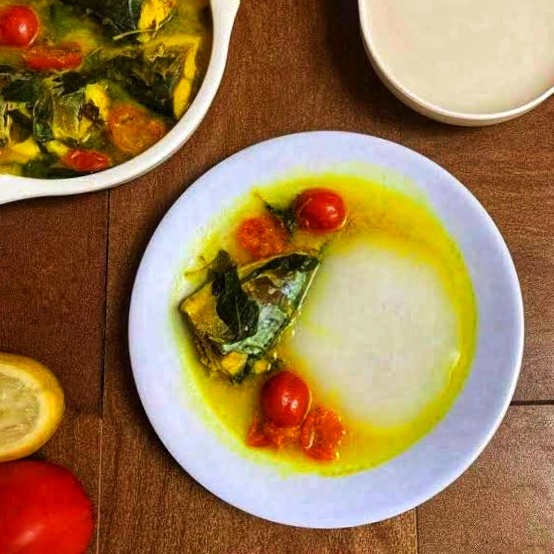A communication food called papeda made from sago
Although sago is more widely used in Papua and Maluku as a staple food, other areas in Indonesia also have various preparations from this sago. The dish that we will explore first from processed sago flour is papeda.
Papeda is the most famous preparation of sago. There are many names for this plain sago porridge. Papeda is the name in the Papua and Maluku regions, in South Sulawesi it is called lime, and around Malaysia or Brunei Darussalam it is called linut.
Some say that papeda is the food of communication. Because since the processing of the sago tree to cooking and eating it is always done together by many people. This is togetherness in the frame of brotherhood that is the distinctive character of Indonesians.
You can use tuna, snapper, tuna, or mackerel. Meanwhile, the lime dish, which is better known in the Luwu area, South Sulawesi, mixes this sago porridge into various kinds of vegetables to shredded chicken and fish.
If you taste it for the first time, it might be a little strange. Because it tastes bland and has the same texture as paper glue.
So, like swallowing sticky glue. However, when it is mixed with a delicious gravy, it is definitely addictive. The sauce is a mix of sour, spicy and savory. Very tasty, isn't it.
How to eat it is also directly sucked and swallowed. No need to chew again because papeda is a soft porridge.
Remember, papeda should be eaten warm. If it's cold, it certainly doesn't taste as good when eaten while it's warm.
If you go to Maluku or Papua, don't forget to try the typical food that we often hear and read about in books, namely papeda or sago porridge. This sago porridge is a variety of Indonesian food that is rich in carbohydrate and nutritional value.
However, you don't have to go far to taste the pleasures of papeda. Now, when sago flour is sold in packages and is available in grocery stores, there is nothing wrong if we try ourselves to make this special sago dish from the eastern part of Indonesia.
How to make yellow sauce papeda
Let's make papeda yellow gravy. The ingredients needed are about 100 grams of sago flour, one liter of water, teaspoon of table salt, don't forget teaspoon of sugar to make it more delicious.
So, now let's start making it. First, dissolve the sago flour in 300 ml of water, then add the sugar and salt.
Next, we boil the remaining water used to dissolve the sago until it boils, then pour it into the sago solution mixture, stir gently until the sago is cooked. If the sago mixture above has become clear, it means that the sago mixture of ingredients has become papeda.
However, if it has not become clear then we can cook it again on low heat, as long as the papeda is still stirred until it is completely clear. Make the dough into several parts using two small pieces of wood or chopsticks by twisting them so that they can be separated from the main dough.
Now we just have to make the yellow fish sauce as a complement. This sauce makes papeda even more delicious.
The ingredients are mackerel about half a kilogram, can also be replaced with other fish (clean, soak with lime juice and salt).
1 lime (squeezed). Basil to taste (weeded). Green cayenne pepper to taste (stem removed).
2 tablespoons of cooking oil (for frying). Lemongrass 1 stick (bruised). 2 bay leaves. Boiled water about 3 cups.
The fine seasoning for the yellow gravy fish is 2 cloves of garlic, 4 cloves of red onion, 3 pieces of candlenut, 2 ginger about one thumb, 2 cm turmeric, 1 tablespoon sugar, lastly 1 teaspoon salt.
When the ingredients are ready, we can start cooking. Kitchen utensils are also provided, such as stoves, pots and pans.
How to make it, first puree the spices then stir-fry together with lemongrass and bay leaves until the aroma is fragrant and ripe. Then, pour enough water and let it boil.
Next, add back the stir-fried dish with fish, cayenne pepper, sugar, and salt. Cook until the fish is cooked.
Finally add the basil leaves and orange juice just before the dish is removed. Stir for a moment and lift.
Yellow gravy fish is ready to be served with papeda porridge. Well, it's easy, isn't it, to make papeda yellow gravy?
With the help of adults around us such as mothers or fathers, it seems very possible if we can make our own culinary specialties of Eastern Indonesia. We can enjoy warm yellow papeda soup while imagining how exotic the culture of Eastern Indonesia, the jungle, and the friendly people are. Good luck!


